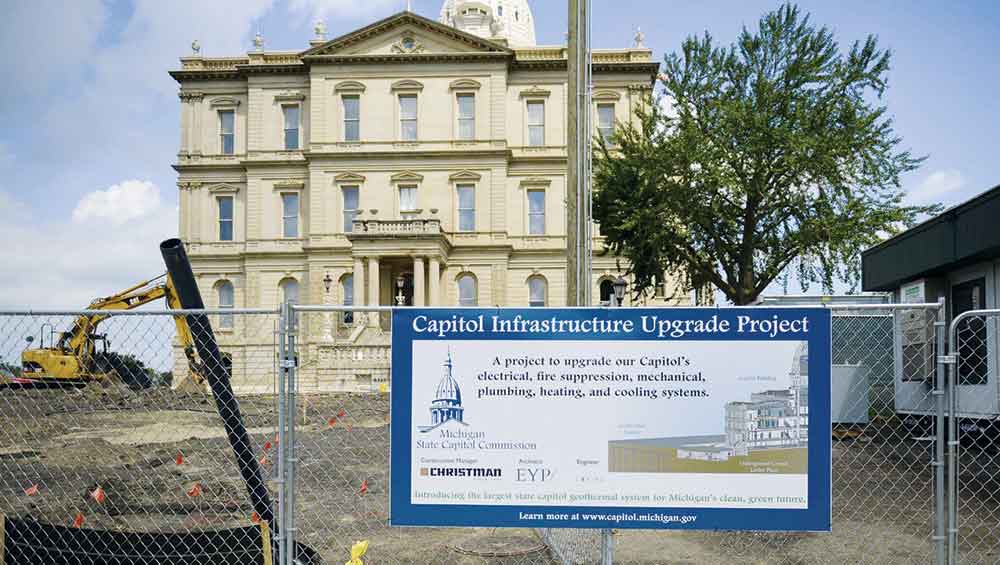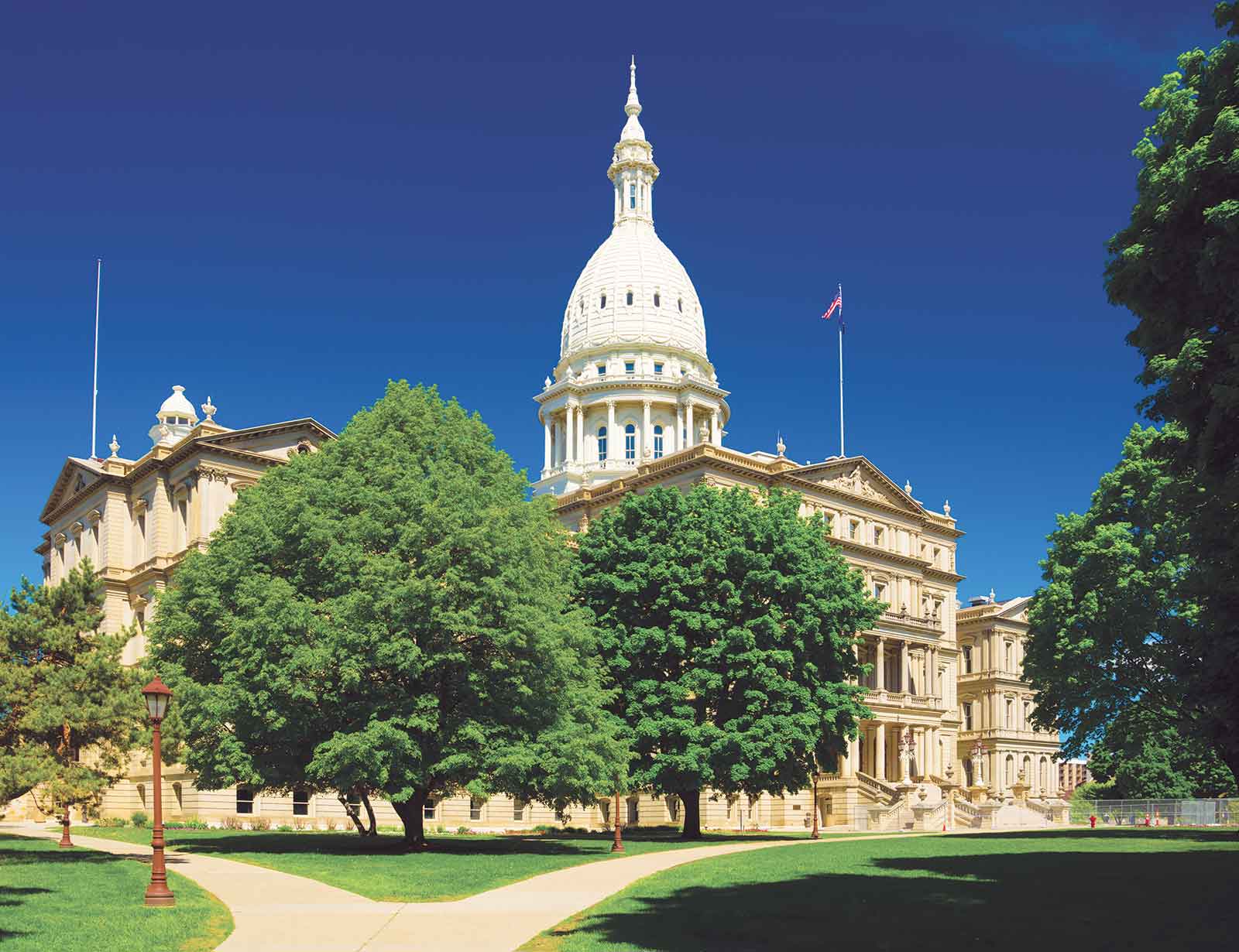By Larry Kaufmann, Michigan Geothermal Energy Association
The Michigan State Capitol in Lansing recently went geothermal. I was involved at the beginning of this process five years ago. The Capitol is 138 years old and probably had its original heating and cooling system, which had many problems. The system was blowing out hot and cold air at the same time, and it was costly. Most importantly, it was not providing proper circulation—especially in the dome, where it was causing damage to the artwork and artifacts in the Capitol.
A committee saw going “green” with geothermal heat pumps as the solution to all these problems. Geothermal will lower the cost of heating and cooling in the Capitol by an estimated $300,000 per year. It will provide more comfort to the people in the building. It will provide better air quality and humidity control to protect the valuable artwork and artifacts.
This 2½-year infrastructure project cost $70 million, with part of this cost being paid for by the Tobacco Settlement. This geothermal system design involved drilling 224 loops about 500 feet deep. Michigan now joins Colorado, Oklahoma, and Idaho as states with a geothermal Capitol. Notice that we are ahead of California and New York in going green.

Some of you may be unfamiliar with geothermal heat pumps, so this information will help you to understand the system and how it can be beneficial for your home. Geothermal has been installed in residential homes since the early 1970s. There are more than 1 million geothermal units in the United States and about 40,000 in Michigan. They work just like your refrigerator. On the bottom of the refrigerator is a coil. Geothermal uses a much bigger coil called a “loop,” which “plugs” into the ground. The ground is a constant temperature between 50-60 degrees year-round, six feet below the soil. Geothermal uses this constant temperature to heat your home in the winter (with compression and a refrigerant) and cool it in the summer. Because the ground is heated by the sun, it is considered renewable energy in Michigan.
Because we are starting with a constant temperature, most geothermal units are four to five times more efficient than a gas, oil, or propane furnace and twice as efficient as an electric air conditioner. This results in big savings for you!
Geothermal costs more to install but saves you money every year. When included in the mortgage of a new home, the savings from geothermal will be larger than the increased cost of installation. Therefore, you will have a positive cash flow from Day 1. Once you install a geothermal system, you will have about a three- to five-year payback versus propane or oil heating. Against gas furnaces and air conditioning, geothermal will have a five- to 10-year payback. These are only estimates, and you should contact a Michigan Geothermal Energy Association (MGEA) approved geothermal contractor to get a quote for your home.

Many people are concerned about sustainability. Here is your chance to go green and save money! You will also reduce your carbon footprint. There is no open flame in geothermal, which is a great safety feature. You will also have better air quality with a more consistent temperature.
Some great recent news is that Congress has just renewed the Geothermal Tax Credit! The tax credit will be 26% in 2021 and 2022 and will be reduced to 22% in 2023. So the time to act is now!
To find a qualified MGEA-approved geothermal dealer, go to earthcomfort.com. Click on the “Contractors” button at the top and enter your ZIP code. You will get a list of all approved MGEA contractors in your area. I do not recommend using a non-MGEA contractor. Many are not fully trained in geothermal, and MGEA cannot help you if the job goes wrong.
I have had a geothermal system in my home for over 20 years. The temperature in my 2,600-square-foot house plus 1,000-square-foot basement has always been 72 degrees. My average heating and cooling bill over these 20 years has been about $70 per month. Geothermal is cost-saving for everyone.







Dear Mr. Kaufman,
Thank you for this account of the geothermal work at the Michigan statehouse. I am a retired architect and emeritus professor of architecture at the UofM, and have been working on a book about alternative energy, including GTE. I learned about the proposed GTE system at the capital some time ago through a project at the University, but never knew whether it was implemented. So many good ideas run adrift these days for wrong-headed reasons. I’m delighted to know that this was not one of them.
I’ve been collecting information and data about GTE for my project, and found the subject to be very difficult, especially in the U.S. Your article is the first I’ve come across that had anything to say about the number of heat pumps installed in the country and a few of the States. Thank you. I guess the major players (power and energy companies) don’t have much of a stake in the GTE game, as they do in solar, wind and nuclear.